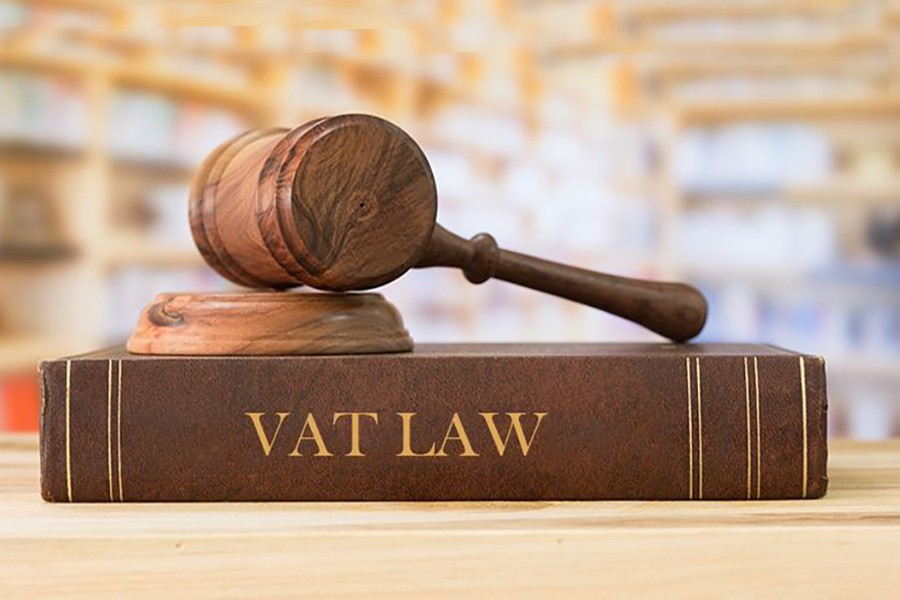The absence of a definition of inputs in the VAT law has put at risk the target of revenue mobilisation from manufacturing companies, officials say.
Under the VAT law, manufacturers are entitled to get refund or adjust the VAT they pay at the time of purchasing or procuring inputs.
In the VAT law-1991 there were specific definitions of the inputs eligible for VAT refund.
However, the new VAT and Supplementary Duty Act 2012, implemented from July 1 last, has no definition of inputs.
Field-level VAT officials say manufacturing companies will be able to claim higher VAT rebates in the current fiscal year in the absence of any definition of inputs in the law. The large ones will be benefited more due to the omission.
The VAT officials have feared a negative growth in revenue collection from the large manufacturing companies due to the higher rebates and some other major factors in mobilising VAT.
In the first two months of the current FY, the Large Taxpayers Unit (LTU) saw its VAT collection drop by Tk 9.22 billion or 15.60 per cent compared to the level of the corresponding period of the last FY.
Talking to the FE, a senior VAT official said the manufacturing companies were claiming higher VAT rebates this year, as the new VAT law has not defined the inputs.
The VAT collection might fall significantly further in the absence of this definition of inputs in the new law, he added.
The new VAT law requires the manufacturers to declare the name of materials and the quantity of the same used in producing an item. They have to make an 'input-out coefficient' declaration to the concerned VAT offices with details of the inputs.
The LTU under the VAT wing has scrutinised declarations of some manufacturing companies.
They have found that the companies' declarations mentioned the name of some items as inputs used in their production. However, the LTU has found genuine reasons to be suspicious.
The LTU has brought it to the notice of the National Board of Revenue (NBR).
In a letter to the NBR, the LTU has mentioned the declaration of M/S Holcim (Bangladesh) Ltd, a large cement manufacturing company, as an example.
The company has included tailoring shop and tailors, social media and virtual businesses, hotel restaurants, printing stationery and office supply, human resources supply and management as inputs to obtain VAT refund.
The declaration also contains service charge on contractual manufacturing, furniture, event management and credit rating agency, auction, automatic laundry, indenting firm, building construction or architect, interior, engineering firm and graphic design.
The company has shown the expenditures for those in the column for raw materials/inputs in the declaration form.
Taking their declaration into cognizance, the field-level VAT offices had to allow them to get VAT refund on the declared inputs, officials said.
In the VAT law-1991, labour, land, building, office equipment and transportation were excluded from the definition of inputs.
Raw materials, laboratory reagents, laboratory equipment, laboratory accessories, any type of fuels, gas, packaging materials, services, spare parts, etc. were defined as inputs in the previous VAT law.
Following the lapses in the law, the cement company obtained a higher VAT refund from the concerned VAT office, officials said.
According to the declaration, the input value of the Holcim Strong Structure (50 kg) increased by Tk 30.97 per unit to Tk 297.27 from Tk 266.30.
Input value of the Holcim Portland Cement Red (50kg) and bulk (1000 kg) went up by Tk 30.97 and Tk 617.76 respectively.
The refundable amounts increased to Tk 3.06, Tk 61.22, Tk 3.06 and Tk 61.16 in the current fiscal year for Holcim Strong Structure (1000 kg), Holcim Strong Structure bulk (1000 kg), Holcim Portland Cement red (50kg) and Holcim Portland Cement red (1000 kg) respectively compared to the previous fiscal.
The field-level VAT offices have found that other manufacturing companies are also showing significantly lower value addition in the current fiscal year compared to the previous year.
The VAT officials said the companies were claiming an increased amount of VAT rebates while showing less value addition, thus putting the VAT collection target under threat.
For example, Holcim's value addition declined by Tk 50.16, Tk 1030.64, Tk 45.17 and Tk 930.64 per unit of Strong Structure (50 kg), Strong Structure bulk, Portland Cement (50 kg) and Portland Cement bulk (1000 kg) respectively, the LTU said in the letter to the NBR.
Because of higher input credit, lower value addition and adjustment of the 5.0 per cent Advance Tax (AT) at the import stage, the LTU says, its VAT collection from the manufacturing companies will decline this year.
It has found that the net payable VAT for Holcim Strong Structure (50 Kg), Holcim strong Structure (1000 kg), Holcim Portland Cement (50 kg) and Holcim Portland Cement red bulk (1000 kg) went down by Tk 2.03, Tk 40.45, Tk 4.16 and Tk 83.29 respectively.
As per new law, the VAT officials do not have any authority to approve the input-output declaration form of the companies. They have to accept whatever is declared by a company.
The LTU said some unscrupulous businesses might take the advantage of the absence of a definition of inputs to evade payment of VAT.
Due to expansion of the area of VAT rebate in the new law, companies obtained rebate to the tune of Tk 1.37 billion in the July-August period, suggest the NBR data.
Also, the companies adjusted AT worth Tk 1.70 billion in the two months.


